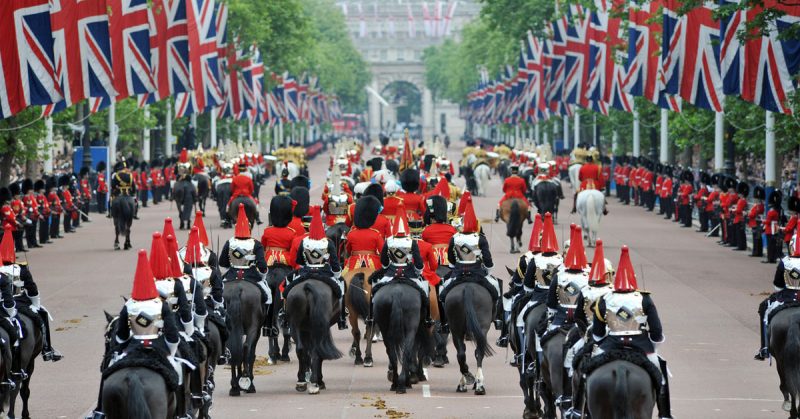The Royal Family and the British Armed Forces are historically intertwined. Queen Elizabeth II is the commander-in-chief of the British Armed Forces and Prince Harry spent a decade in the Army, including two tours overseas in Afghanistan.
In December 2017, he was appointed Captain General Royal Marines. Queen Elizabeth herself served in World War II as a driver with the Auxiliary Territorial Service (ATS). It makes sense, therefore, that the Armed Forces played more than a superficial role in her grandson’s wedding.
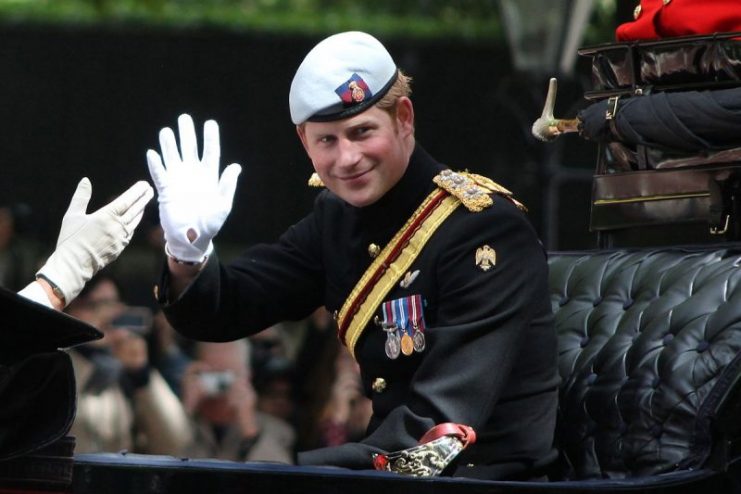
According to Kensington Palace, more than 250 members of the Armed Forces took part in ceremonial duties at the wedding. There were 28 members of the Household Cavalry lined up along both sides of the staircase—known as a staircase party—in front of St George’s Chapel, Windsor Castle. The State Trumpeters and a Captain’s Escort, also from the Household Cavalry, provided their own services to the carriage procession.
Streets within the precincts of Windsor Castle were lined by members of the Windsor Castle Guard from 1st Battalion Irish Guards and by Armed Forces personnel from the following units:
- The Royal Navy Small Ships and Diving (Prince Harry is Commodore-in-Chief)
- The Royal Marines (Prince Harry is Captain General Royal Marines and served in Helmand Province, Afghanistan with 662 Squadron, 3 Regiment Army Air Corps)
- The Royal Gurkha Rifles (Prince Harry served with the 1st Battalion, The Royal Gurkha Rifles in Afghanistan in 2007.)
- The RAF Honington (Prince Harry is Honorary Air Commandant)
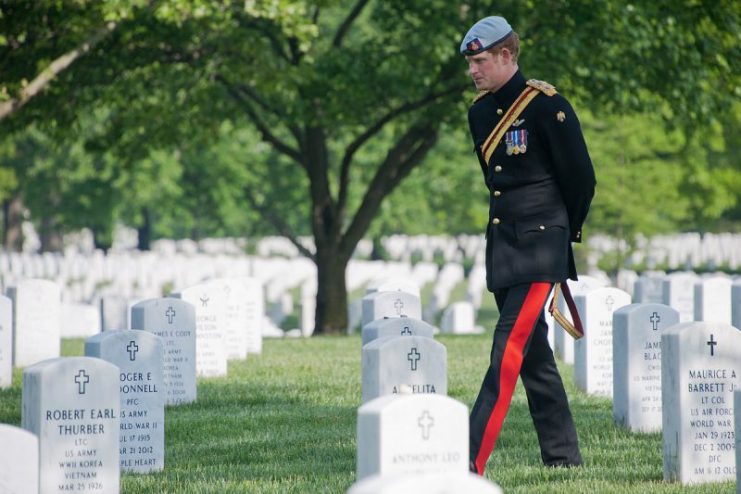
Along with representatives of these units, members of the 1st Battalion Irish Guards lined the streets within the precincts of Windsor Castle.
Before the wedding, Kensington Palace issued a press release explaining the significance of the large ceremonial military contingent. According to the official release, “Prince Harry and Ms. Markle are pleased that members of the Armed Forces will play such a special role in their Wedding.” The couple expressed their deep gratitude for the benefit of their presence on such an important day.
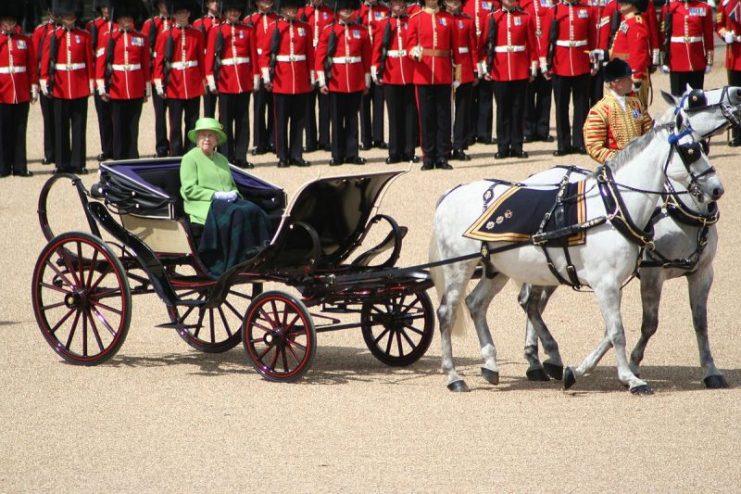
Another nod to the military was Prince Harry’s dress blues. He served in the Blues and Royals (Royal Horse Guards and 1st Dragoons) (RHG/D), a cavalry regiment of the British Army, part of the Household Cavalry. The Colonel-in-Chief is Queen Elizabeth II, and the Colonel of the Regiment is Anne, Princess Royal. It is the second-most senior regiment in the British Army.
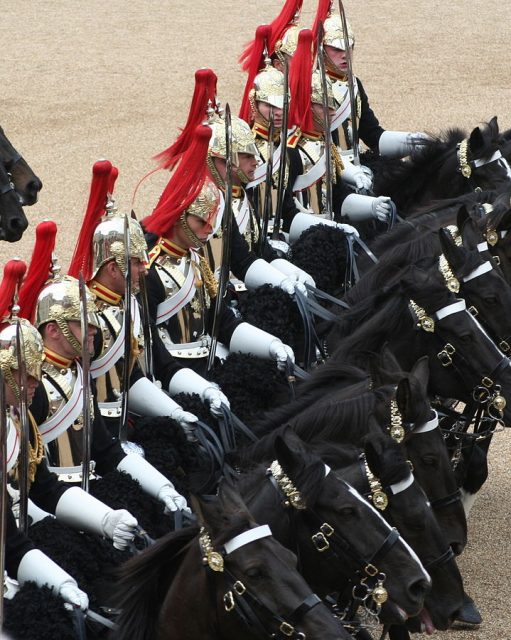
The official ceremonial dress of the Blues and Royals is quite remarkable: members of the unit wear a traditional blue tunic and a metal breastplate, and the classic look is completed by a metal helmet plumed in red.
Aspects of the ceremonial dress harken back to the early days of both units, and much of their uniform was inherited from the Royals upon their unification. Additionally, the Blues and Royals wear their chin strap under their chin. On service dress, the Blues and Royals wear a blue lanyard on their left shoulder.
Harry’s uniform impressed many military insiders. According to defense industry consultant and ex-British army officer Nicholas Drummond, Harry’s choice of uniform from his original regiment “tells you a lot about the man, his humility and his commitment to service” by choosing to dress for his then-rank of Major, the Prince eschewed dressing for his current rank of Captain General.
Facial hair is usually not worn by anyone wearing a military uniform. But since the groom isn’t in active service, he’s been allowed to keep his whiskers while wearing the Blues and Royals. Because of his military status, Queen Elizabeth II gave her grandson special permission to don the uniform on his wedding day.
The Duke of Cambridge, his best man, wore the same uniform. The gold cords over his shoulder, called an aiguillette, were added to his uniform when he was named an aide-de-camp to the Queen in 2013.
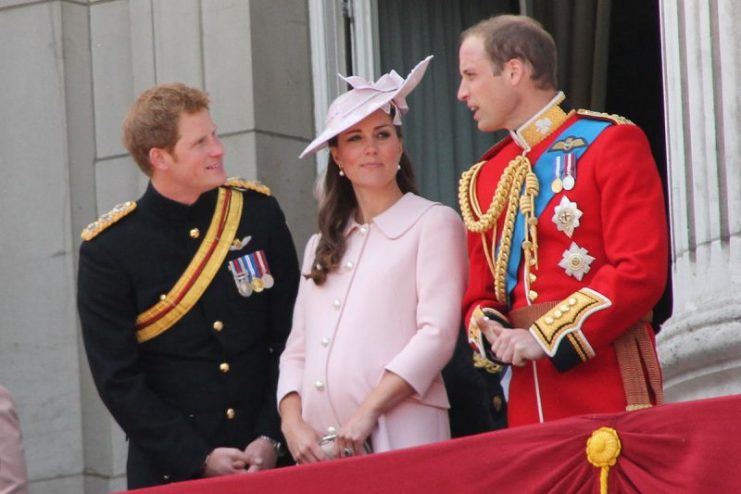
Music was provided by the Band of the Irish Guards, as Prince William is Colonel of the Regiment.
Though not militarily ornamented, there was a great deal of sentimentality and tradition to go along with Meghan Markle’s Givenchy dress. The Queen lent Meghan her grandmother’s tiara, “the Queen Mary Diamond Bandeau Tiara.” The tiara was made in 1932 from an 1893 brooch. Some royals have worn the tiara with a sapphire as the center stone, but Meghan chose a diamond.
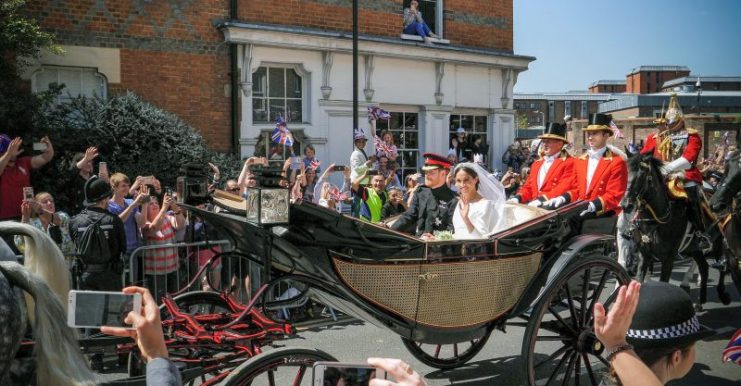
The bride’s veil also had a special meaning—it was adorned with 53 embroidered flowers, one for each country in the Commonwealth. The veil was painstakingly hand-made over hundreds of hours with no detail spared. The seamstresses involved went to such lengths as washing their hands every half hour during its construction to ensure that it was delivered to Ms. Markle in immaculate condition.
The bride-to-be had the veil adorned with embroidered California poppies, a nod to her home state, and wintersweet flowers from the Kensington Palace grounds. After the wedding, she was wearing a beautiful ring that had belonged to Princess Dianna, a gift from her new husband.
Queen Elizabeth also made a fashion statement with her lime-green coat over a purple floral dress and a matching lime-green hat. The ensemble matched her signature style of bright colors, purposefully worn to stand out from a crowd.
